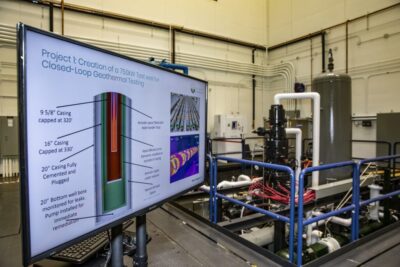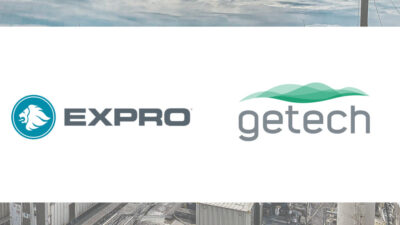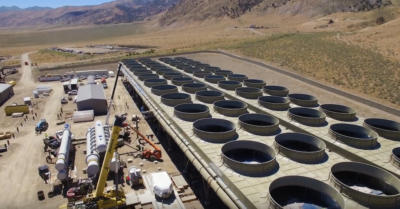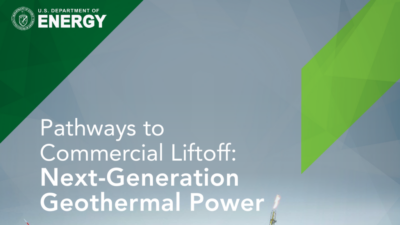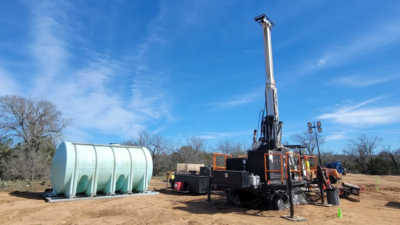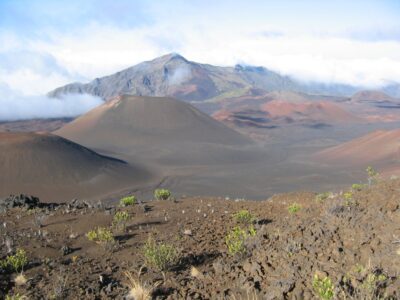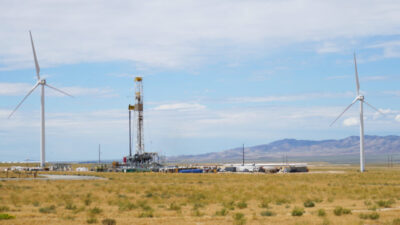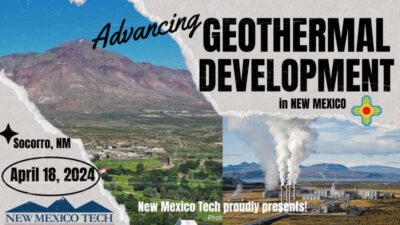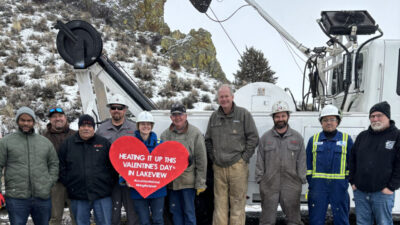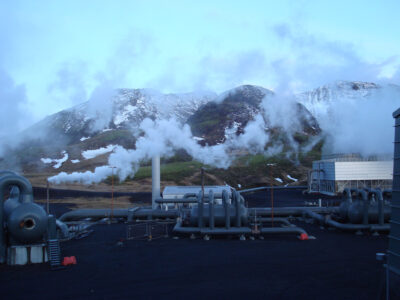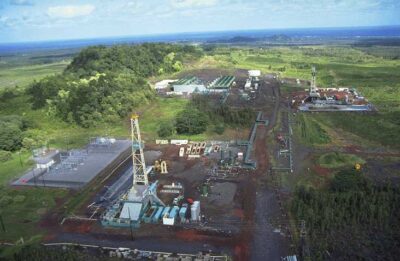Proyecto demostrativo de CO2 supercrítico en plantas geotérmicas, se realizará en Coso, California
La empresa americana GreenFire Energy, ha anunciado que está preparando el trabajo en su proyecto demostrativo para utilizar el CO2 supercrítico, en vez de agua, como fluido de trabajo para transportar la entalpía desde el recurso hasta la superficie para la producción de electricidad en base al recurso geotérmico.
En un documento publicado por GreenFire Energy, se ha anunciado que la preparación del primer proyecto demostrativo ECO2G™ está en progreso, y corresponde a una planta geotérmica de generación de electricidad utilizando CO2 supercrítico en un sistema de circuito cerrado. La empresa anunció durante Marzo de este año, que recibió un subsidio de 1.5 millones de la Comisión de Energía de California para el proyecto.
ECO2G es una tecnología dramáticamente distinta en la generación de electricidad a partir del recurso geotérmico, y permitirá la instalación de miles de megawatts libres de carbón en California y otros mercados. Esta tecnología innovativa, utiliza componentes probados a escala comercial para la producción de energía limpia, de base para el sistema eléctrico y flexible, a precios competitivos, sin procesos que consumen agua.
Distinto a los proyectos hidrotermales convencionales, ECO2G utiliza CO2 supercrítico (SCO2) en vez de agua para mover la energía térmica a través del sistema. Ahora, el paso crucial es realizar un proyecto demostrativo para poder comercializar ECO2G.
A continuación dejamos más detalles del proyecto en inglés:
Project Overview
GreenFire will design, build, and operate an ECO2G demonstration plant using an underperforming hydrothermal well at the Coso KGRA in Inyo County California. This project will be the first field-scale demonstration of ECO2G technology for geothermal power production. The project is expected to prove that ECO2G can both make utility scale power in large, colocated or greenfield projects or make power from currently unproductive wells.
It is anticipated that the project will generate sufficient data to guide the development of commercial projects ranging from 20 MW to 1000 MW. Tasks to be undertaken The project involves plugging an existing well above the perforated production liner, and coaxially inserting an insulated pipe to a depth just above the plug. Process fluids, such as supercritical CO2 will then be injected into the smaller center pipe, and flow downward to the bottom of the well, then return to the surface through the annulus between the two pipes. As the fluid returns to the surface, it will absorb heat and expand, creating the thermosiphon. The fluid then passes through a radial inflow expander/generator set to produce power.
To complete the cycle, the process fluid will be cooled before being returning to the well in a closed loop. Along the process pathway, the temperature, pressure, and flow rate of the fluid will be measured.
This project, per the plan submitted to the California Energy Commission, will require seven tasks:
- Normal administrative matters, such as report writing, and permitting.
- Preparing the well for the project.
- Designing and constructing the surface equipment, including methods for fluid handling and actual or simulated power production.
- Preparation for system operation, including completing the system and testing all components.
- System operation, including running matrices of tests for sCO2 and water.
- Shutdown and site restoration.
- Public outreach and technology transfer activities.
Related activities already undertaken
GreenFire’s core technology was developed with significant involvement by the US Department of Energy. which awarded a $2 million grant to study supercritical CO2 power generation in an open system. Extensive early modelling with Lawrence Berkeley National Laboratory (LBNL) indicated that ECO2G can produce commercial scale power without premature depletion of the heat resource. The company then retained Baker Hughes to help build a drilling cost model to determine the economic viability of ECO2G in a wide variety of conditions. More recently, GreenFire and our partners at the Lawrence Livermore National Laboratory were awarded funding under the Department of Energy’s Small Business Voucher program. LLNL will perform research related to novel methods of well completion and directional drilling in hot and deep geothermal formations.
Unlocking new geothermal resources
Many existing geothermal fields suffer from declining production, and the risks and expense of finding and characterizing new fields have discouraged investment. Moreover, many existing potential geothermal fields do not have sufficient water to achieve their highest potential, a situation that has been exacerbated by recent years of drought and the increasing effects of climate change. Engineering and financial modelling done by Lawrence Berkeley National Laboratory, Baker Hughes, and GreenFire Energy indicates that the scaled-up technology can substantially contribute to meeting renewable portfolio standards in the competitive California renewable energy market.
ECO2G versus Conventional Geothermal
Substantial recent advances in deep and directional drilling technologies from the oil and gas industry can be applied to extracting geothermal energy from previously inaccessible depths. ECO2G harnesses these technologies to access high-temperature (above 350°C) geothermal resources that cannot be exploited with existing geothermal technology.
Many such areas exist in active geothermal regions around the globe. ECO2G is very different from conventional hydrothermal projects.
The key differentiators are:
- ECO2G utilizes sCO2 rather than water as the working fluid to carry enthalpy from the resource back to the surface for power production
- The sCO2 is circulated through a closed loop well system
- The ultimate depth of the well system is typically deeper (and hotter) in the geologic formation than the permeable region where water circulates
- ECO2G’s modular architecture and variable-speed turbo-expanders allow for both flexible and base-load power generation.
Taken together, the advantages of ECO2G technology overcome the critical barriers that currently limit the ability of conventional geothermal technology to reduce fossil-based energy sources:
- Additional renewable power can be added to the clean energy supply with far less risk, time, and expense than finding and developing new geothermal areas
- ECO2G projects can provide flexible or base-load power on short notice as grid needs and economic returns require
- Existing hydrothermal projects can be useful and made productive for longer periods
- Existing but unproductive geothermal wells can be rehabilitated and made profitable
- ECO2G provides water-free geothermal power generation when using air-to-air heat rejection.
Source: GreenFire Energy // ThinGeoEnergy








